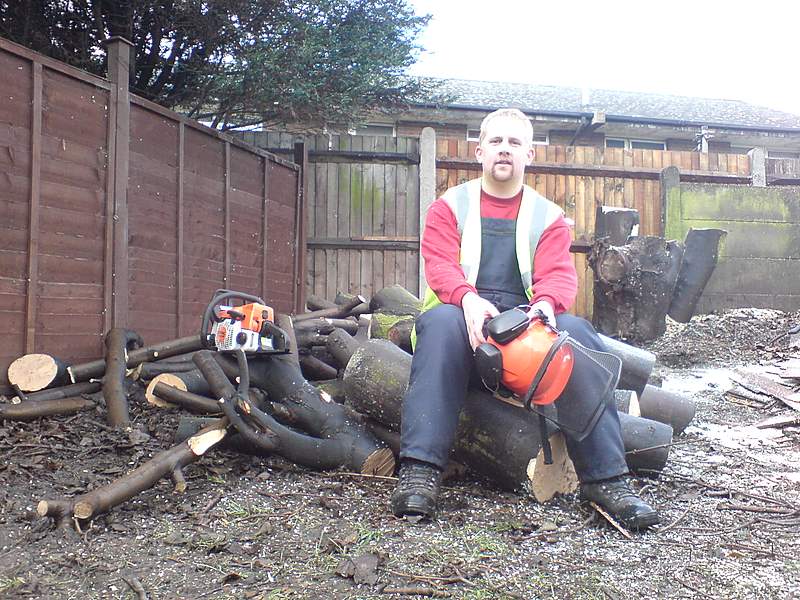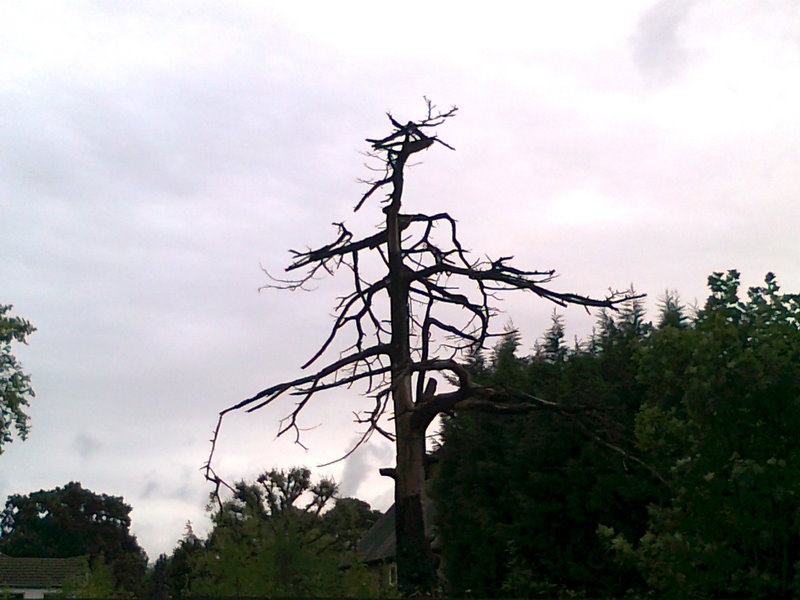
Hi, my name's Duncan Wright and I'm a qualified tree surgeon. I've
lived in the Croydon area all my life and do most of my work in South London and the suburbs. i) Sometimes trees need to be felled. It can feel like a real
waste if they're particularly fine specimens, but no matter how beautiful a tree
is, if it is a dangerous liability due to condition or location then it has to
go. It’s not just a question of safety though – it may be loss of light, the tree’s size, density
of foliage, or frankly it may just be an ugly thing that you don't like anymore.
Whatever the thinking if the tree is on your land or you have the permission of the owner then
it can be felled for any reason you care to name providing it
is not protected. The most common reason for removing a tree is that it is unsuitable for the site
because of size. A lot of trees look great in the catalogue or at the
garden centre, but the planter often has no realistic idea of how large it will
eventually become. Leylandii is an obvious example. Leyland Cypresses are often
planted to provide quick screening and clipped back to form hedges – but without regular
maintenance they will easily reach thirty, forty, or even sixty foot and upwards as
individual trees. By this point they've become a problem, blocking out light and encroaching
on garden space. Felling ensues, normally to the neighbours' delight!
ii) Often trees need to be maintained. Heavy winds,
lightning strikes, previous poor maintenance
etc, can damage the structure of a tree. Branches that snap and fall away leave ugly
broken wood and such snags die back over time, rotting and leaving wounds open to
pests and disease. Damaged branches that don’t drop immediately are an obvious danger: they
fall to earth when they choose, usually without much warning. Trees that are too large are the ones most commonly chosen for
treatment of some kind. They can be pruned back, thinned out or have their lower
branches removed. Pruning can be something of an art and pruning regimes can
differ quite substantially, even within genera.
Pests, disease and fungi are importants thing to look out for. There's not
always very much that can be done to save infected areas over and above the
measures that the tree takes itself naturally, but evidence of infection can give a good
indication of the health of other parts of the tree, and selective limb removal
can be considered.
There is much literature and professional guidance regarding arboriculture.
BS 3998 is the relevant British Standard and prescribes the techniques currently considered good practice:
All my work is in accordance with this. As you'd expect there is extensive advice on health
and safety in the profession and there are some notes included in this regard on my
insurance page.

Let's consider two facets of arboriculture:
i) Removal of trees
ii) Maintenance of trees

All pages © Duncan Wright, 2010,2017